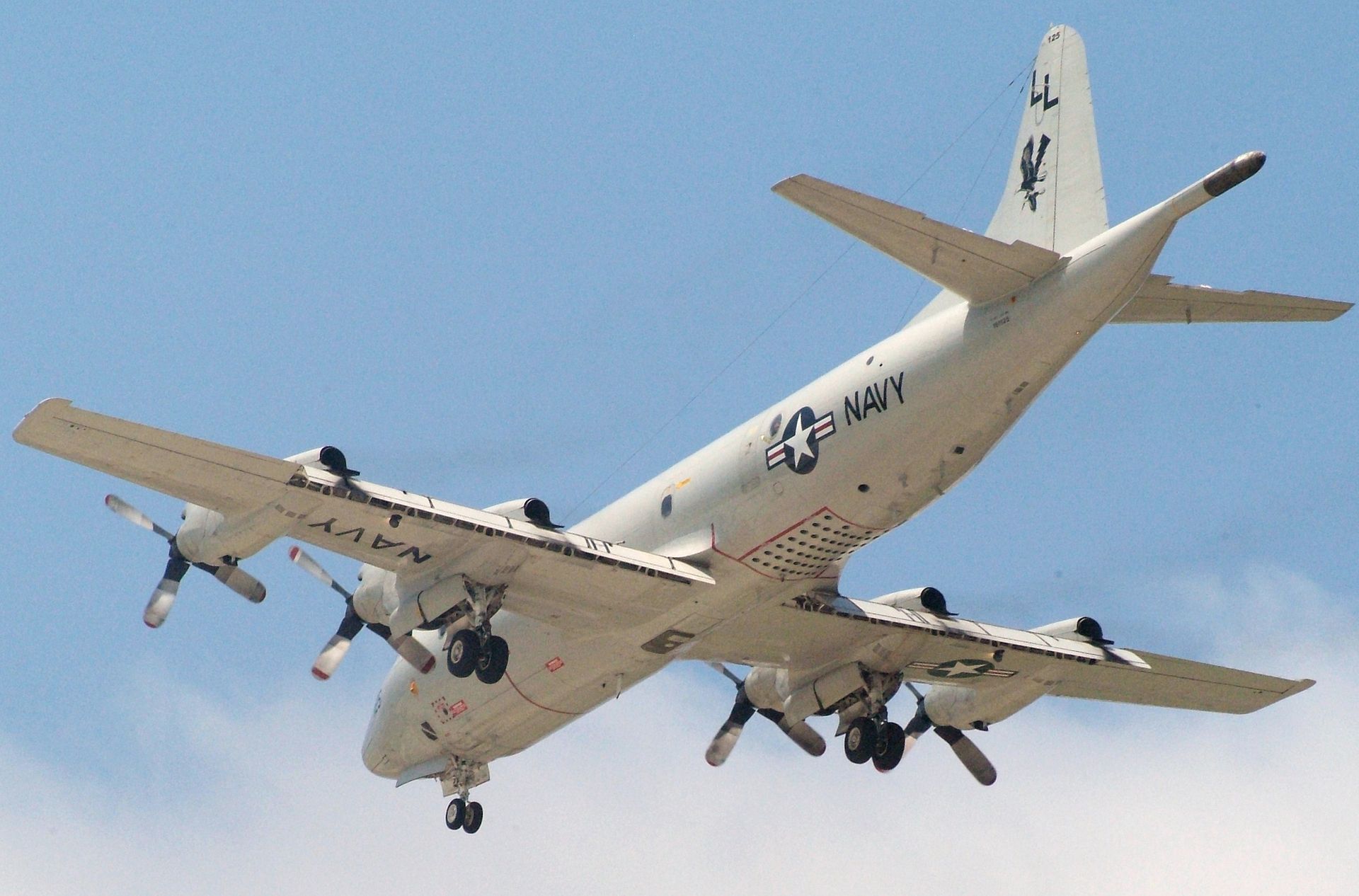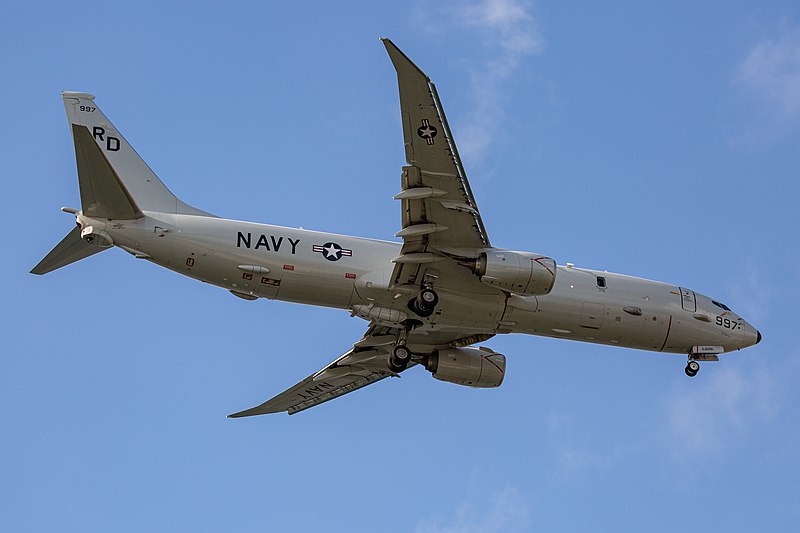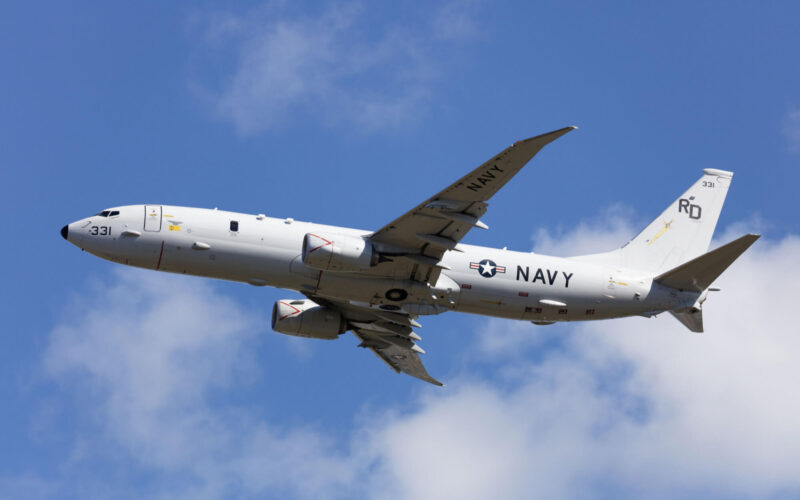Naval aviation first emerged during the First World War when aircraft were primarily used for reconnaissance missions. During the Second World War, naval aircraft played a major role in the war effort, carrying out a variety of missions, including anti-submarine warfare, maritime patrol, and search and rescue. Since then, naval aviation has continued to evolve, and today maritime aircraft are an essential part of any navy.
Here is a list of the top 10 maritime patrol aircraft, as determined by their popularity in terms of performance, technology, warfare capabilities, and utilization history.
1. P-3 Orion
The Lockheed Martin P-3 Orion, aptly known as ‘the all-terrain hunter’, is a four-engine turboprop multi-mission anti-submarine maritime surveillance and reconnaissance aircraft developed for the United States Navy. It was introduced in the 1960s as a replacement for the Lockheed P2V Neptune.
The P-3 Orion is still in active service with several forces such as the United States Navy, the Argentine Navy, the Royal Australian Air Force, the Royal Canadian Navy, and the German Air Force, and has played pivotal roles in the Cuban Missile Crisis, Hurricane Katrina, Op Unified Resistance, and other missions.
The P-3 is capable of flying a variety of missions, including maritime patrol, search and rescue, anti-submarine, and air-to-ground attacks, and the bomb bay fuselage is also capable of carrying nuclear warheads making it a formidable force. The 10 hardpoints can carry combinations of a variety of armaments such as ASMs, AGMs, and SLAM-ERs.
Equipped with state-of-the-art sensors, including a magnetic anomaly detector (MAD), the P-3 is a nightmare for submarines. Other avionics include the Raytheon surveillance Radars, Advanced Imaging Multispectral Sensor (AIMS), and the Multi-Mode Imaging System.
The P-3 Orion has a maximum speed of 648 kilometers per hour and a combat range of over 8,913 kilometers.

(Credit: Jerry Gunner / Wikimedia Commons)
2. Saab Swordfish MPA
The Saab 340 MPA is a twin-engine turboprop multi-role long-range maritime patrol aircraft which can be opted as the Bombardier Global 6000 or the Q400 variant. It is operated by the Swedish Air Force. This aircraft is usually compared with the Boeing Poseidon P-8 and is generally considered to be a more economical, versatile, and novel choice.
The Saab Swordfish has multi-role capabilities such as anti-submarine warfare, anti-surface warfare, Intelligence, surveillance, and reconnaissance missions. It can also augment area-denial or anti-access missions. Saab boasts of the aircraft being able to carry all these missions in one go.
The C4I packages, Automatic Identification Systems (AIS), Electronic Warfare and Self Protection Systems (EWSPS) are among the sensors worth mentioning that, coupled with intelligent automation and interchangeable workstations, make it a force to be reckoned with. The ability to drop and operate sonobuoys also adds to this plane’s capabilities.
The Saab Swordfish has a maximum cruise speed of 902 kilometers per hour and a range of 11,000 kilometers. It has the capability of staying airborne without refueling for almost eight hours.

(Credit: Alan Wilson / Wikimedia Commons)
3. Boeing P-8 Poseidon
The P-8 Poseidon is a military derivative of the Boeing 737 commercial airliner and is a maritime patrol and anti-submarine warfare capable aircraft. It is operated by the U.S. Navy, the Indian Navy, the Australian Air Force, and the U.K Royal Air Force. Being a derivative of the 737 commercial airliner makes the P-8 well suited for tackling supply chain issues at a lower operational cost.
The P-8 can fly missions ranging from anti-submarine warfare, maritime surveillance, search and rescue, Intelligence surveillance, and reconnaissance roles.
Having 11 hardpoints it can carry a host of conventional armaments like torpedoes, Harpoon anti-ship missiles, AGMs, SLAM-ERs, depth charges, mines, and the High-Altitude Anti-Submarine Warfare Weapon system. The aircraft is also capable of dropping sonobuoys and monitoring them aiding the operators in anti-submarine warfare.
The aircraft also incorporates features from the Boeing YAL-1A Airborne Laser and an AP-3C Orion-derived mission system. Other avionics worth mentioning are the Raytheon Multi-Mission Surface Search radar and Electronic Support Measures Suite.
The P-8 has a maximum speed of 907 kilometers per hour and a range of over 7,500 kilometers.

(Credit: Balon Greyjoy / Wikimedia Commons)
4. Kawasaki P-1
The Kawasaki P-1 is a four-engine turboprop maritime patrol aircraft and a successor to the P-3C. It is also the only modern maritime purpose-built aircraft with no civilian counterpart operated by the Japanese Maritime Self-Defense Force.
Equipped with eight hardpoints, including bombay stations, the P-1 is capable of carrying a variety of AGMs such as the Harpoon and Maverick AGMs, mines, depth charges and torpedoes, making it well equipped for anti-submarine warfare, bombing runs and maritime surveillance.
The fly-by-optics flight control system provides a tactical edge to the aircraft by decreasing electro-magnetic disturbances to the sensors as compared to the fly-by-wire control systems. The Active Electronically Scanned Array (AESA), MAD, Advanced Combat Direction System and other sophisticated sensors make this aircraft a flying behemoth.
It has a maximum speed of 996 kilometers per hour, and a range of 8,000 kilometers.

(海上自衛隊 / Wikimedia Commons)
5. Airbus C295 MPA
The Airbus C295 is a STOL, twin-engine, turboprop, rough and tough military transport aircraft capable of withstanding the harshest weather conditions. The aircraft is in service with a number of militaries and government agencies, including Chile, Portugal, Egypt and Mexico. It has seen action in numerous conflicts, including the war in Afghanistan.
The six hard points armed with Torpedoes, ASMs, mines and depth charges, the MPA variant of the C295 is capable of maritime missions, including anti-submarine warfare, SIGINT, surveillance, and imagery intelligence operations.
Avionics such as the Fully Integrated Tactical System (FITS), Air Data systems (ADS), EO/IR, ELINT, MAD and SATCOM make it competent in meeting the modern maritime and warfare requirements.
The C295 has a maximum speed of 480 kilometers per hour and a range of over 5,630 kilometers. It is capable of carrying up to 71 passengers and is also equipped for aerial refueling.

(Credit: Tim Felce / Wikimedia Commons)
6. Atlantique ATL2
The Dassault-Breguet Atlantique 2 entered service in 1992 in the Marine Nationale, the French Navy. It is based on the Breguet Atlantic, an airframe developed in the 1960s.
The French Navy deployed the aircraft during several conflicts and peacekeeping missions, including in Kosovo, Libya, and Romania.
The Atlantique 2 can carry depth charges, mines, and torpedoes, and fire the Aérospatiale AM-39 Exocet anti-ship missiles.
The ATL2, powered by two Rolls-Royce Tyne engines, has a maximum speed of 600 kilometers per hour and a range of over 7,300 kilometers. It is capable of carrying up to 3.5 tonnes of armament.

(Credit: © B. Otelli)
7. EMB 145 MP
Built on the framework of the Embraer R-99, the EMB 145 MP is a twin-turbofan maritime patrol aircraft. The 145 MP is utilized by Mexico while other variants are operated by other countries like Brazil and Greece.
With four underwing hardpoints, the aircraft can perform anti-submarine and anti-ship warfare.
Mentionable avionics include the Active Electronically Scanned Array radar, C3I capabilities and Signal intelligence like ELINT making it suitable for maritime missions.
The EMB 145 MP reaches a top speed of 828 kilometers per hour and has a range of 2,873 kilometers.
8. ATR 72 MPA
The ATR 72, a twin-engine, turboprop regional airliner, is the bigger, more expensive iteration of the ATR 42 with greater capacity, power, and range. The aircraft is in service with a number of airlines and also in use by the Pakistani, Italian and Nigerian forces.
Having four external hardpoints makes this aircraft worthy of anti-submarine and anti-ship warfare. Missions such as vessel tracking, coastal surveillance, and search and rescue are the ATR 42’s bread and butter due to its advanced tactical observation system and variety of sensors. The Active Electronically Scanned Array (AESA) radar, Electro-Optical Infrared Turret (EO/IR) and Electronic Support Measures (ESM) are also some of the noteworthy features of this plane.
The ATR 42 has a maximum speed of 556 kilometers per hour and a range of over 1,527 kilometers. It is capable of carrying up to 70 passengers.
9. HC-144A Ocean Sentry
Dominating the Oceans, the HC-144A Ocean Sentry is a twin-turboprop maritime patrol aircraft purpose-built for medium-range maritime surveillance. It is under operation by the U.S Coast Guard. It has participated in many search and rescue missions, including the Haiti Earthquake in 2010 and Hurricane Sandy in 2012.
Based on the CN-235 Persuader, it is more adept for non-violent, command and control, transport, MEDEVAC, and surveillance missions.
Its main avionics include a Forward Looking Infrared (FLIR) sensor, daylight spotter scope, a multi-mode search radar, Airborne Automation Identification System, ESMs and C4I systems.
The top speed achieved by the Ocean Sentry is 437 kilometers per hour, and a range of 3,264 kilometers.
10. Ilyushin Il-38
The Ilyushin Il-38, nicknamed ‘Dolphin,’ is a four-engine turboprop maritime patrol aircraft operated by the Indian Navy and the Russian Navy.
Built in the 1960s, and modeled after the II-18, and used by the Soviet Navy, it was primarily built for anti-submarine warfare. It is capable of carrying almost 9,000 kg of disposable stores that include depth charges, mines, torpedoes, and bombs.
The II-38 has found usage in maritime surveillance and reconnaissance as the anti-submarine warfare it once saw and dominated has decreased.
Having a maximum speed of 645 kilometers per hour and a range of 7,200 kilometers, it is a good match for long range maritime patrol activities.

(Credit: Ministry of Defence of the Russian Federation)

